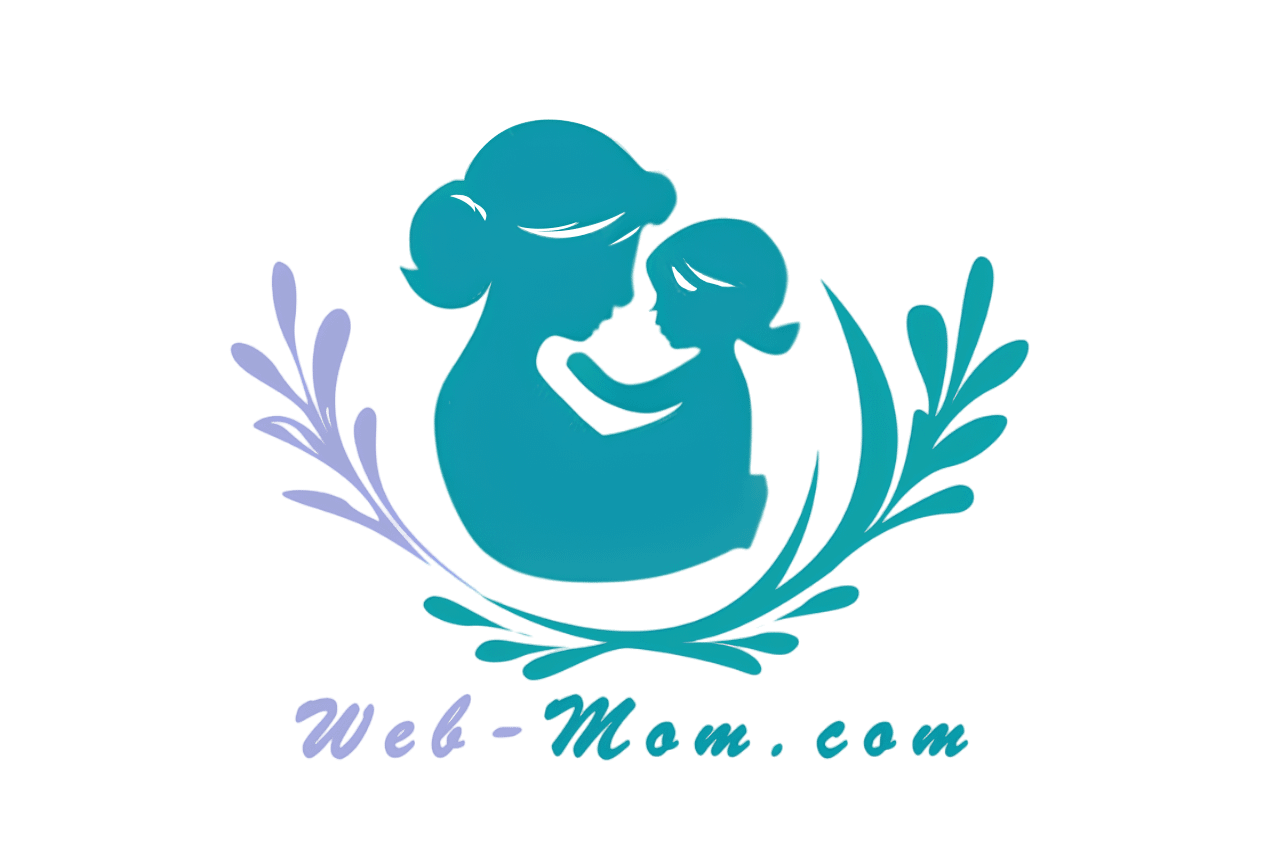
WEB-MOM – Managing allergies in children can be a challenging and sometimes overwhelming task for parents. At Web-Mom.com, we understand the importance of ensuring your child’s health and comfort. This comprehensive guide provides practical tips and strategies to help you effectively manage your child’s allergies and create a safe, allergy-friendly environment.
“Discover essential tips for managing children’s allergies on Web-Mom.com. Learn how to identify triggers, implement preventative measures, and provide effective treatments.”
In this article, we will cover the different types of allergies, common triggers, diagnostic methods, and strategies for managing and treating allergies in children.
Understanding Allergies
What are Allergies?
Allergies occur when the immune system reacts to a substance (allergen) that is typically harmless to most people. The immune response can cause a range of symptoms, from mild to severe.
- Immune Response: The body mistakenly identifies the allergen as harmful and releases chemicals like histamines to fight it.
- Symptoms: Allergic reactions can include sneezing, itching, swelling, and in severe cases, anaphylaxis.
Common Types of Allergies in Children
Children can develop allergies to various substances. Here are some of the most common types:
- Food Allergies: Reactions to certain foods, such as peanuts, tree nuts, milk, eggs, wheat, soy, fish, and shellfish.
- Environmental Allergies: Reactions to airborne allergens, such as pollen, dust mites, mold, and pet dander.
- Skin Allergies: Conditions like eczema or contact dermatitis caused by allergens in soaps, detergents, or fabrics.
- Insect Allergies: Reactions to insect stings or bites, such as from bees, wasps, or mosquitoes.
- Medication Allergies: Reactions to certain medications, such as antibiotics or pain relievers.
Identifying Allergy Triggers
Observing Symptoms
Careful observation of your child’s symptoms can help identify potential allergens. Here’s what to look for:
- Timing: Note when symptoms occur, whether they are seasonal (pollen) or year-round (dust mites, pet dander).
- Location: Observe where symptoms occur, such as at home, school, or outdoors.
- Food Diary: Keep a food diary to track any reactions to specific foods.
Allergy Testing
Allergy testing can help confirm specific allergens. Here are common methods:
- Skin Prick Test: A small amount of allergen is placed on the skin, and the skin is pricked to see if there’s a reaction.
- Blood Test: Measures the presence of specific antibodies (IgE) to allergens in the blood.
- Elimination Diet: Eliminating suspected allergens from the diet and gradually reintroducing them to identify triggers.
Managing Environmental Allergies
Reducing Indoor Allergens
Minimizing indoor allergens can help manage environmental allergies. Here’s how:
- Dust Mites: Use allergen-proof mattress and pillow covers, wash bedding weekly in hot water, and vacuum regularly with a HEPA filter vacuum.
- Pet Dander: Keep pets out of bedrooms, bathe pets regularly, and use air purifiers to reduce dander.
- Mold: Address any moisture problems, use dehumidifiers, and clean areas prone to mold with mold-killing solutions.
Controlling Outdoor Allergens
Managing exposure to outdoor allergens can reduce symptoms. Here are some tips:
- Pollen: Keep windows closed during high pollen seasons, use air conditioning, and have your child shower and change clothes after being outdoors.
- Mold Spores: Avoid outdoor activities during damp, humid weather, and wear a mask when gardening or raking leaves.
Managing Food Allergies
Reading Labels
Carefully reading food labels is crucial for managing food allergies. Here’s what to do:
- Check Ingredients: Always check ingredient lists for potential allergens.
- Allergen Statements: Look for allergen statements that highlight the presence of common allergens.
- Cross-Contamination: Be aware of the risk of cross-contamination in processed foods.
Meal Planning and Preparation
Planning and preparing meals with food allergies in mind can help prevent reactions. Here are some strategies:
- Safe Foods List: Create a list of safe foods and recipes that are free of allergens.
- Cooking at Home: Prepare meals at home to control ingredients and avoid cross-contamination.
- Substitutes: Use allergen-free substitutes for common ingredients (e.g., almond milk for cow’s milk, gluten-free flour for wheat flour).
Dining Out
Dining out with food allergies requires extra precautions. Here’s how to stay safe:
- Inform the Restaurant: Notify the restaurant staff about your child’s allergies and ask about safe menu options.
- Carry Medication: Always carry your child’s allergy medication, such as antihistamines or an epinephrine auto-injector.
- Emergency Plan: Have an emergency plan in place in case of an allergic reaction.
Managing Skin Allergies
Identifying Irritants
Identifying and avoiding skin irritants can help manage skin allergies. Here’s what to do:
- Soaps and Detergents: Use hypoallergenic and fragrance-free soaps, shampoos, and detergents.
- Fabrics: Choose clothing made from natural fibers like cotton and avoid synthetic materials that can irritate the skin.
- Lotions and Creams: Use hypoallergenic moisturizers to keep the skin hydrated and reduce irritation.
Skincare Routine
Establishing a gentle skincare routine can help manage skin allergies. Here’s how:
- Regular Bathing: Bathe your child regularly with lukewarm water and mild, hypoallergenic soap.
- Moisturize: Apply a hypoallergenic moisturizer immediately after bathing to lock in moisture.
- Avoid Scratching: Encourage your child to avoid scratching, which can worsen irritation and lead to infection.
Managing Insect Allergies
Avoiding Insect Stings and Bites
Taking steps to avoid insect stings and bites can help manage insect allergies. Here’s how:
- Protective Clothing: Dress your child in long sleeves and pants when outdoors.
- Insect Repellent: Use insect repellent on exposed skin and clothing.
- Avoiding Insects: Keep your child away from areas where insects are common, such as flower beds and garbage cans.
Emergency Plan for Insect Allergies
Having an emergency plan in place is crucial for managing insect allergies. Here’s what to include:
- Epinephrine Auto-Injector: Ensure your child carries an epinephrine auto-injector if prescribed by their doctor.
- Emergency Contacts: Have a list of emergency contacts and instructions for what to do in case of a severe reaction.
- Medical Alert Bracelet: Consider having your child wear a medical alert bracelet indicating their allergy.
Managing Medication Allergies
Identifying Safe Medications
Working with your child’s healthcare provider to identify safe medications is essential. Here’s how:
- Medical History: Provide a detailed medical history to your child’s healthcare provider, including any known allergies.
- Alternative Medications: Ask about alternative medications that do not contain the allergen.
- Allergy Testing: Consider allergy testing for medications if your child has a history of allergic reactions.
Managing Reactions
Knowing how to manage reactions to medications can prevent severe outcomes. Here’s what to do:
- Monitor Symptoms: Monitor your child closely for any signs of an allergic reaction after taking a new medication.
- Seek Medical Help: Seek immediate medical help if your child shows signs of a severe allergic reaction, such as difficulty breathing or swelling.
- Document Reactions: Keep a record of any allergic reactions to medications and inform healthcare providers to avoid future incidents.
Treating Allergies
Over-the-Counter Medications
Over-the-counter (OTC) medications can help manage allergy symptoms. Here are some common options:
- Antihistamines: Help relieve symptoms like itching, sneezing, and runny nose. Examples include cetirizine (Zyrtec) and loratadine (Claritin).
- Decongestants: Help relieve nasal congestion. Examples include pseudoephedrine (Sudafed) and phenylephrine (Neo-Synephrine).
- Nasal Sprays: Help reduce inflammation and congestion in the nasal passages. Examples include fluticasone (Flonase) and mometasone (Nasonex).
Prescription Medications
In some cases, prescription medications may be necessary to manage allergies. Here are common options:
- Corticosteroids: Help reduce inflammation and treat severe allergic reactions. Examples include prednisone and hydrocortisone.
- Leukotriene Inhibitors: Help reduce inflammation and treat allergic rhinitis and asthma. Examples include montelukast (Singulair).
- Epinephrine Auto-Injectors: Used for severe allergic reactions (anaphylaxis). Examples include EpiPen and Auvi-Q.
Allergy Immunotherapy
Allergy immunotherapy, also known as allergy shots, can help reduce sensitivity to allergens. Here’s how it works:
- Gradual Exposure: Involves gradually exposing your child to increasing amounts of the allergen to build tolerance.
- Long-Term Solution: Can provide long-term relief from allergy symptoms.
- Doctor Supervision: Must be administered under the supervision of an allergist or healthcare provider.
Creating an Allergy-Friendly Home
Allergen-Free Zones
Creating allergen-free zones in your home can help manage your child’s allergies. Here’s what to do:
- Bedroom: Make your child’s bedroom an allergen-free zone by using allergen-proof covers and keeping pets out.
- Kitchen: Keep allergenic foods separate and label them clearly to avoid cross-contamination.
- Living Areas: Use air purifiers and clean regularly to reduce allergens in common living areas.
Regular Cleaning and Maintenance
Regular cleaning and maintenance can help reduce allergens in your home. Here are some tips:
- Vacuuming: Vacuum carpets and upholstery regularly with a HEPA filter vacuum.
- Dusting: Dust surfaces frequently with a damp cloth to avoid spreading allergens.
- Air Quality: Use air purifiers and maintain proper ventilation to improve indoor air quality.
Educating and Empowering Your Child
Teaching Self-Management
Teaching your child to manage their allergies can empower them and reduce anxiety. Here’s how:
- Allergy Awareness: Educate your child about their allergies and the importance of avoiding triggers.
- Symptom Recognition: Teach your child to recognize the early signs of an allergic reaction and seek help immediately.
- Medication Use: Instruct your child on how to use their allergy medications, such as inhalers or epinephrine auto-injectors.
Communicating with Caregivers
Ensuring that caregivers are informed about your child’s allergies is crucial. Here’s what to do:
- Inform Caregivers: Provide caregivers, teachers, and coaches with detailed information about your child’s allergies and emergency plan.
- Written Instructions: Give caregivers written instructions on how to manage an allergic reaction and where to find emergency medication.
- Emergency Contacts: Ensure caregivers have a list of emergency contacts and know how to reach you in case of an allergic reaction.
Conclusion
Managing allergies in children requires a comprehensive approach that includes identifying triggers, implementing preventative measures, and providing effective treatments. At Web-Mom.com, we hope this guide provides you with the tools and strategies needed to manage your child’s allergies and create a safe, allergy-friendly environment.
By staying informed, working closely with healthcare providers, and teaching your child to manage their allergies, you can help them live a healthy and active life. Remember, the key to successful allergy management is being proactive, prepared, and supportive.
Thank you for visiting Web-Mom.com. We hope you find our articles helpful and inspiring as you navigate the important journey of parenthood and allergy management.

Web-Mom.com is a small blog, where you can find information to be a better parents. From parent to parents 🙂
Site Links
About Web-Mom
We always thinking, what will other parents do? How can they do it? So here we are, writing article from parents around the world. We know, you know.
Copyright 2024 web-mom.com


